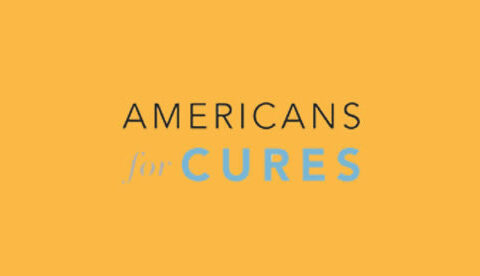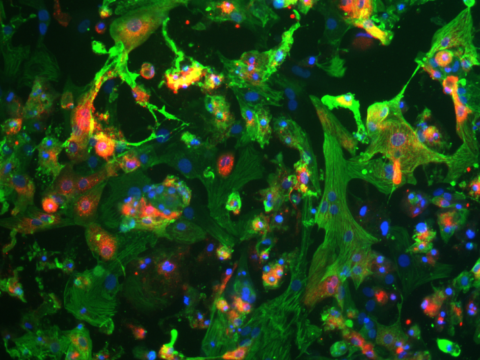Across the globe, the best and brightest physicians and medical researchers are working around the clock to develop treatments and cures for COVID-19, including right here in California. Nearly two decades ago, California made a critical investment in stem cell research that propelled our state to the forefront of regenerative medicine and set the stage for current research opportunities – such as finding treatments and cures to mitigate many chronic diseases. One such example is Coronavirus, which has impacted the life of every Californian.
In 2004, voters overwhelmingly approved Proposition 71, establishing the California Institute for Regenerative Medicine (CIRM) and authorizing a $3 billion investment in stem cell research to advance therapies and treatments for diseases and injuries including cancer, heart disease, Alzheimer’s, Parkinson’s, diabetes and now, COVID-19. But this vital source for funding research and therapy development will soon end, unless California voters pass Proposition 14 this November.
Accelerating COVID-19 Vaccine & Treatment Development with Stem Cell Research
Earlier this year, CIRM allocated $5 million to support projects dedicated to combatting COVID-19 because of at least two viable paths afforded by stem cells to possibly prevent and treat the virus:
-
Developing Vaccines Using Stem Cells
Historically, there is a demonstrated success of developing vaccines using cell-based approaches. Vaccines for many devastating illnesses and conditions – including Polio, Hepatitis A, Rubella, Mumps, Rabies and Measles – were developed in this way. The use of stem cells in vaccine development serves multiple benefits, including greater speed and stability of vaccine production, which is especially critical in combatting the virus. -
Using Stem Cells to Test Existing Medications Or Identify New Treatments
Using stem cells, scientists can grow clumps of cells specific to an organ or tissue in a dish (in this case, the lungs), allowing them to test large numbers of candidate drugs at a high speed and with great accuracy. Recent research indicates there are currently more than 3,000 potential drugs/molecules to treat/immunize against COVID-19. Stem cell models can provide an efficient and effective method to screen large numbers of potential candidates and to identify those that have the greatest chance of success.
A Demonstrated History of Success in Combating Infectious Diseases – Zika Virus
- Several years ago, a Zika virus epidemic terrorized countries across the globe. After receiving funding from CIRM, a UC San Diego scientist used stem cells to grow a clump of brain cells to test existing medications for potential Zika treatments.
- The research led to the discovery that an already FDA-approved drug can block the Zika virus from dividing. It is believed that once applied to the clinical population, this drug will prevent transmission between mother and child.
CIRM Grants Awarded to Help Fight COVID-19
CIRM-funded grants are highly diverse in their approach for mitigating COVID-19, including:
- Cell transplantation
- Use of convalescent plasma
- Drug screening for novel compounds
- Screening using currently FDA-approved drugs
- Vaccine development
- Engineering immune cells for effective elimination of COVID
- Generating organoids for drug screening
- Optimizing anti-COVID siRNA delivery techniques
Current CIRM funding to combat COVID-19 (both prevention and treatment) includes the following grant recipients to date:
Clinical Trials
- $750,000 to Dr. John Zaia at City of Hope to conduct a clinical trial administering blood plasma from recovered COVID-19 patients to treat those with the virus.
- $750,000 to Dr. Michael Matthay at University of California, San Francisco to conduct a clinical trial using mesenchymal stromal cells for treatment of Acute Respiratory Distress Syndrome (ARDS), a life-threatening consequence of COVID-19 that leads to ICU admission and ventilator dependence.
- $750,000 to Dr. Xiaokui Zhang at Celularity Inc. to conduct a clinical trial using placental-derived stem cells to generate a population of immune cells known as Natural Killer (NK) cells that would be administered to patients with COVID-19. NK cells are thought to boost the patient’s immune system to increase its defenses against the virus.
Early-Stage Research Programs
- $350,000 to Dr. Vaithilingaraja Arumugaswami at UCLA to test the ability of a drug candidate to prevent COVID-19 viral replication in the lungs, thereby reducing lung injury and inflammation.
- $150,000 to Dr. Song Li at UCLA to use biomaterials as a way to “activate” the immune system and boost vaccine response in elderly patients.
- $150,000 to Dr. Stuart Lipton at Scripps Research Institute to re-purpose a class of drugs that fights the virus while protecting the brain against coronavirus-related damage.
- $150,000 to Dr. Justin Ichida at the University of Southern California to determine whether a suitable drug can be derived from a specific class of proteins referred to as ‘kinase inhibitors’ to prevent infection by COVID-19.
- $300,000 to scientists at UCLA for two projects – one utilizes stem cell models to develop a vaccine and the other uses lung stem cells to screen for and identify an effective drug against the virus.
- $150,000 to Dr. Jianhua Yu at City of Hope to use umbilical cord blood cells to derive a population of immune cells (known as NK cells), and to test the ability of these newly generated NK cells to prevent and treat the virus.
- $150,000 to Dr. Helen Blau at Stanford University to re-purpose 2 FDA-approved drugs as a way to stimulate muscle stem cells of the diaphragm in COVID-19 patients with extended ventilator use and augment their lung regeneration.
- $150,000 to Dr. Albert Wong at Stanford University to facilitate vaccine development.
- An additional $100,000 to Dr. Albert Wong to expand on the initial approach for vaccine development by assessing its impact on the Latinx and African American populations — two ethnicities disproportionately impacted by the virus in California.
- $249,996 to Dr. Preet Chaudhary at the University of Southern California to use induced pluripotent stem cells (iPSCs) and generate natural killer cells (a type of immune cell) with a chimeric antigen receptor (CAR). This “engineered” cell population is thought to boost the immune system, identify the virus, eliminate it, and could potentially be used as an off-the-shelf therapy for treatment of COVID-19.
- $228,229 to Dr. Evan Snyder at the Sanford Burnham Prebys Medical Discovery Institute to use induced pluripotent stem cells (iPSCs) to generate clumps of cells that resemble the actual lung (lung organoid). These lung organoids will then be infected with SARS-CoV-2 and two potential drugs will be tested on them. This model could expedite FDA authorization for clinical testing.
- $150,000 to Dr. Steve Dowdy at UC San Diego to use a technique for effective delivery of anti-COVID siRNAs to lung cells. Small interfering RNA (siRNA) are usually used to “silence” genes. Thus, using this method, the COVID virus could be “silenced”.
- $249,974 to Dr. Karen Christman at UC San Diego to use a biomaterial that may reduce inflammation in the lungs and help to attract new lung stem cells to the area of damage to promote repair.
- $250,000 to Dr. Lili Yang at UCLA to use bone marrow stem cells, engineer them into a population of immune cells known as Natural Killer T-cells (NKT) and to deliver these new cells in COVID-19 models and assess the ability of the cells to treat the infection.
To learn more about the grants and progress of critical COVID-19 research through the California stem cell program, visit www.cirm.ca.gov.



